Growing asparagus in the home garden takes patience.
Depending upon which option you choose at planting time – seeds, crowns, or starts – it can take several growing seasons before the bed you’ve lovingly prepared will play host to those tender, delicious springtime spears.
In the fall, when the garden beds begin to doze under piles of leaves in preparation for first frost, your asparagus may more closely resemble fern-like Christmas trees, sprouting foliage up to seven feet tall.
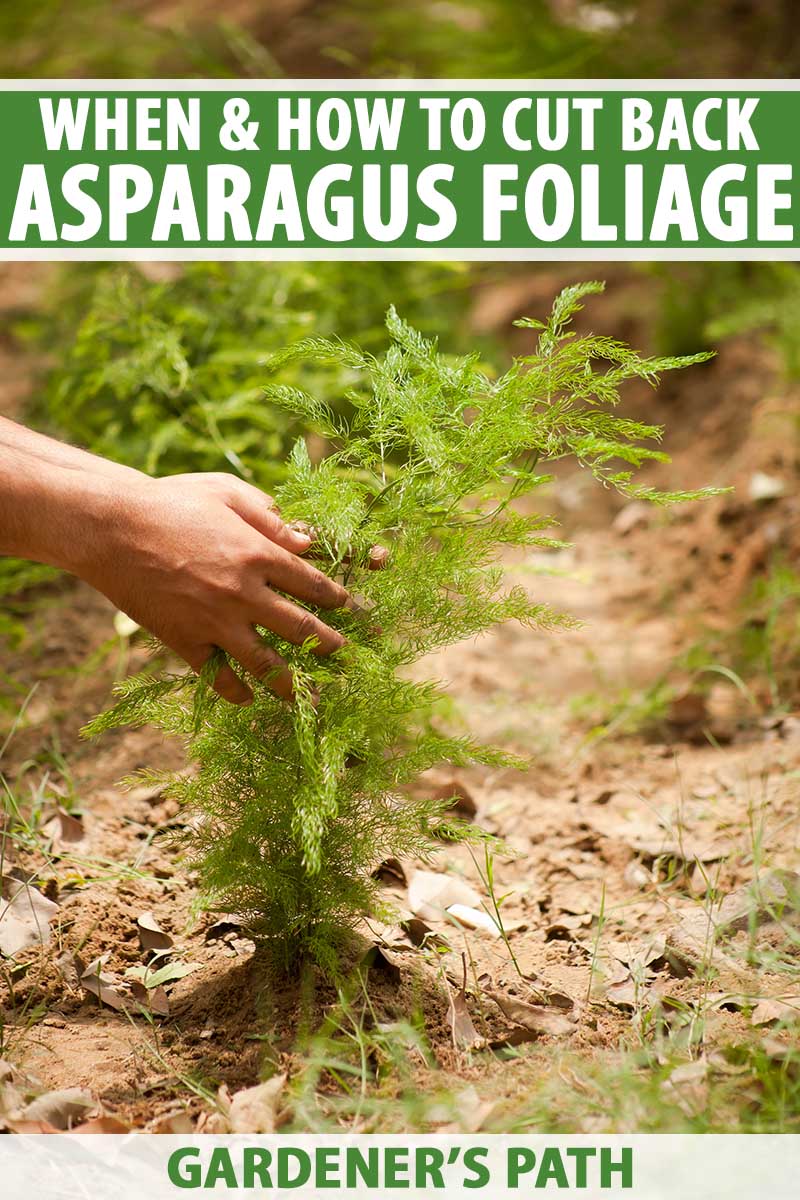
We link to vendors to help you find relevant products. If you buy from one of our links, we may earn a commission.
Even though asparagus is dioecious – with plants that are either male or female gendered – both the males and females produce foliage and flowers. But only female plants produce seed.
To keep your plants healthy and to prepare them for their next growing season, it’s recommended to cut back foliage in the fall after the second or third year following planting.
But what does cutting back do for your plants? Let’s take a closer look.
What You’ll Learn
Asparagus Anatomy
Asparagus is a perennial flowering plant that can produce crops for more than twenty years.
Underground, it grows from clusters of roots commonly known as crowns. The crowns are typically left to overwinter in the ground.
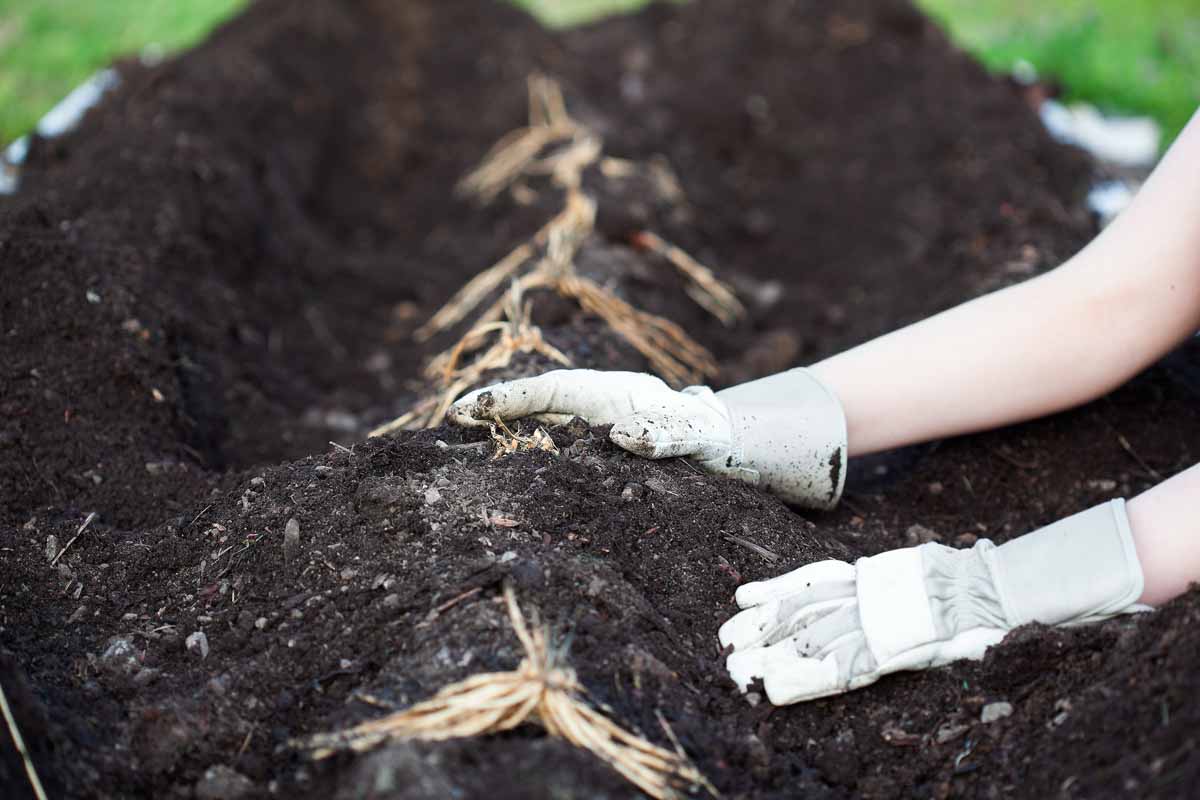
The young, new shoots that sprout in early spring are the part of the plant that we eat, but after the harvest period has ended, the plants produce foliage.
Harvesting the stalks triggers the production of new growth to replace the harvested shoots, which uses a lot of energy.
From summer through fall, before winter weather strikes, the springtime sprouts that weren’t harvested will continue to grow into a tall, bushy, fern-like plant.
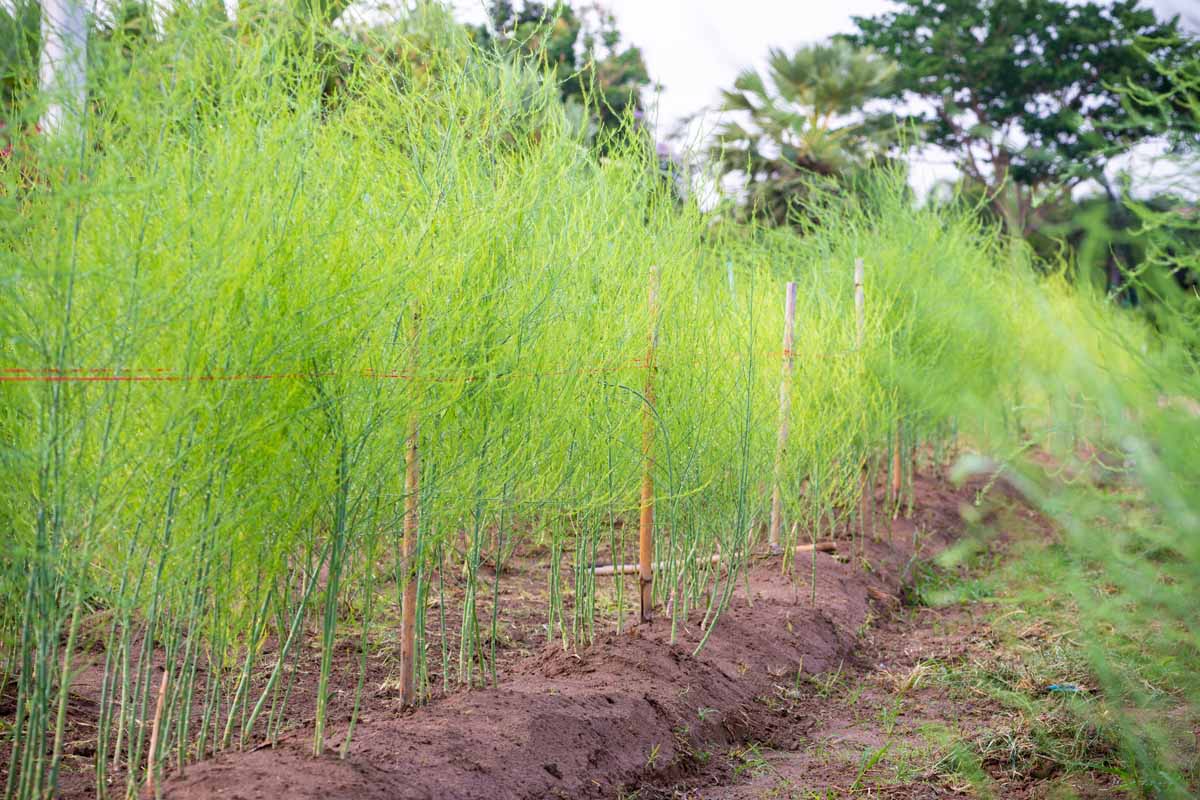
The green vegetation is dense and can grow up to seven feet tall.
While some consider bolting to be a negative thing, it’s actually a natural part of the growth cycle that allows the plant to photosynthesize and propagate.
The plants will produce tiny blooms that await pollinators to spread pollen from male to female, and by late fall, female plants will produce small, round, red seed pods that hang from the branches like Christmas ornaments.
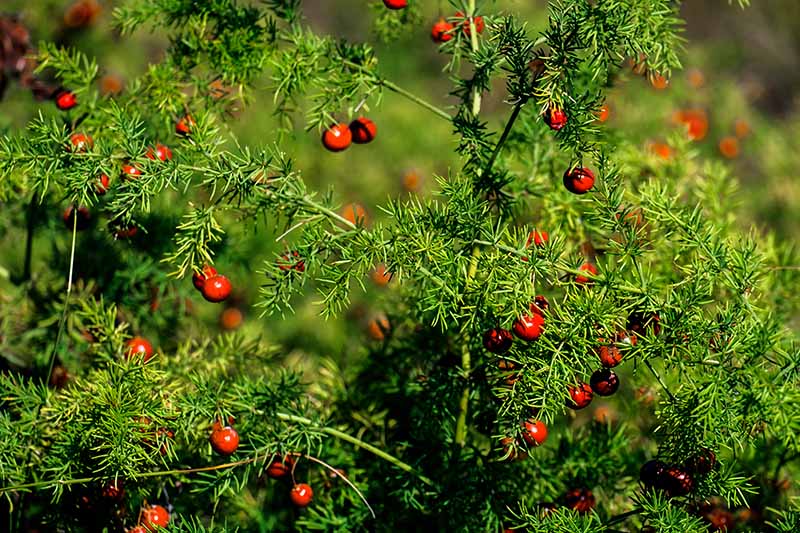
Check our guide to learn more about the differences between male and female plants.
While gardeners who want to collect seed may let the pods ripen, it’s typically recommended not to allow seeds to grow, because the process consumes a lot of energy.
As a part of the life cycle of the plant, foliage begins to die back, turning yellow or brown as crowns go dormant. At this time, you’ll want to cut them back for winter.
Cutting dead foliage back serves a few purposes:
First, allowing plants to complete their seasonal life cycle will produce healthier roots. The foliage will continue to photosynthesize and store energy in the root system throughout the growing season.
Second, roots that form to support the growth of the new foliage are stronger and deeper. Healthy roots produce healthier plants, and a more bountiful crop in the next growing season.
Additionally, nuisance pests called asparagus beetles are known to inhabit the ferns, where they lay eggs in the fall.

Cutting back can nip an infestation in the bud ahead of the next growing season.
Cutting Back Foliage
Autumn foliage that has turned yellow or brown is ready to be cut back.
It’s important to refrain from pruning prior to die-off, as the plant will continue to photosynthesize while it is still green.
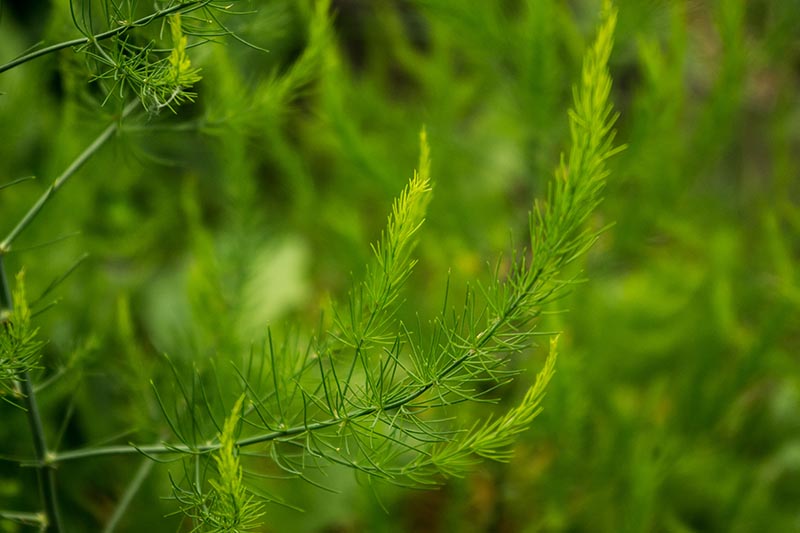
When plants have gone dormant, use pruning shears to cut ferns back to ground level.
If the cuttings are healthy and not diseased or infested, they can be composted or used to mulch the growing bed for the winter.
Always use caution when composting pruned ferns, however, as pests may lay eggs there that can be spread to your compost pile, leading to potential reinfestation when they hatch.
When foliage has been cut back, adding a thick layer of compost or mulch will help to protect crowns through the winter, especially in areas where snow cover can become deep, or temperatures dip well below freezing.
You can learn about mulching to protect cold-tolerant crops in this guide.
Quick Tips for Fall Cutbacks
Keep the following in mind when you cut back your plants in autumn:
- Growth of asparagus foliage is an important part of the plant’s life cycle.
- Unless you plan to save the seeds, it’s best to remove them to conserve energy.
- Wait until foliage turns yellow or brown and the plant becomes dormant before pruning.
- Cut foliage back to ground level.
- Mulch asparagus beds to protect them during the winter months.
A Little Maintenance Goes a Long Way
It takes a lot of energy for plants to grow, and removing dead leaf matter will help to boost production in the next growing season.
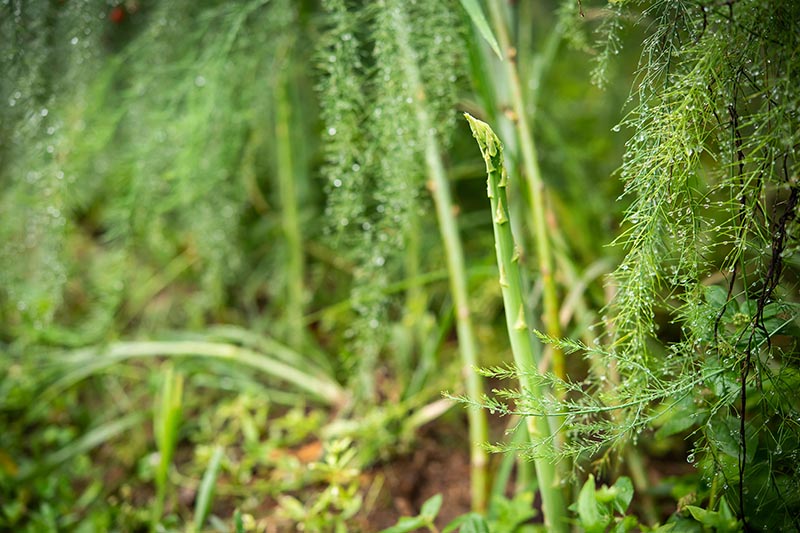
Preparing perennial plants for winter will save a lot of disappointment, as those that are maintained well will return, vigorous and ready for a new year.
Have you had some experience growing asparagus in your garden? Did you notice a better yield after cutting back foliage?
And for more information about growing asparagus, check out these guides next:
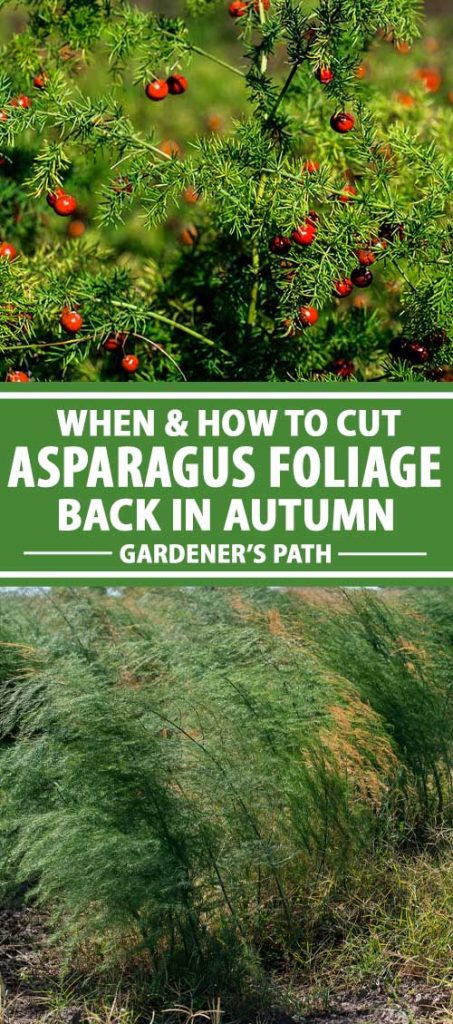
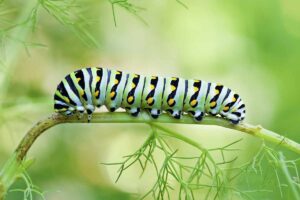

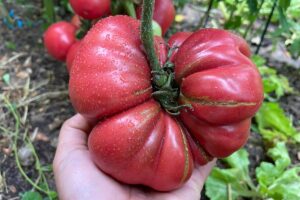
I found this very useful as I was wondering how and when to cut back our asparagus bed. Understanding why it is important makes the knowledge even more useful.
Thank you and good luck with your Florida project.
Thanks so much Rob! I think it’s very important to understand why we do what we do in our gardens, so I love to hear that you found some useful information in my article! 🙂
Great article thanks. We live in England near Bristol so pretty mild winters here, so wondering whether to mulch or not?
Hi Carol, I’m so sorry I somehow missed your question! You can add a layer of mulch three to four inches deep if you experience lows under about 20 degrees, but if temperatures are mild and stay above that, all should be well without it. I hope you’ve had a fantastic garden season!
I started some crowns this year. I have several mature plants also. The new crowns grew some small ferns this year 3 to 12 inches high.. Should I cut these first year ferns back this year.
Thanks
Don
Hi Don! Thanks for your great question. With first year crowns, if you live in an area that experiences very cold winter temperatures and snow fall, some gardeners recommend leaving the ferns in tact through the winter months and cutting them down in spring. This can help to “tent” the snow, offering some cold protection for young roots. If you’re in a place where temperatures are fairly mild or you don’t experience heavy snow fall in winter months, you can cut the ferns back after they’ve turned brown – usually around the time of first frost. We wish you a… Read more »
Thanks for sharing the information, Kelly. I have weeds all over the place from my asparagus, and I would like to prune the female plants before they all fall off, even though they haven’t turned brown. I’m not clear if that is okay. Please help.
You can clip the seed pods to avoid reseeding, but it’s best to wait to prune the ferns entirely until they’ve at least begun to turn yellow, to provide the crowns with the energy they need for next year. Browning of the ferns is an indication that they’ve begun their transition into winter dormancy.
lots of good info here, thanks so much. i love my gardens i wish I had more time in them.
Thank you Susie! Believe me, I’d be in the garden full-time, year round as well, if I could.
I just want to say thanks for taking time to walk us gardeners thru the process of putting our asparagus to bed for the winter. Can I use my leaves that I rake up to cover the asparagus for the winter? Thanks again for your time.
Hi Christopher! I love talking gardening so I’m happy to share, and I’m really glad you found it helpful! You can use leaf mulch as long as the leaves are disease-free, and you’ll want to shred them well. If you leave them whole, they can become matted together and prevent water from penetrating to the plants below. I hope you have a peaceful and pleasant winter. 🙂
Hello. I’m in zone 10a and our asparagus stay green year round. Do we still need to prune them back to the ground?
Good question Kimberly. How many years have you been growing your plants? Is there a rainy season where you live? And are asparagus beetles active in your area? Asparagus requires a dormant period to be productive and the ferns should be cut during dormancy, typically some time between fall and spring, before new spears emerge. Dormancy may be brought on by drought rather than cold temperatures in warm climates, so keep this in mind – asparagus that has ferned out should not be overwatered and encouraged to stay green through this restful period. Fall pruning is often recommended to reduce… Read more »
hi I live in Phoenix AZ and my asparagus never seems to go brown my plants are 2 years old now and I have never cut them back when should I, is there a time of year, after all it doesn’t really get to cold here.
I never cut mine back , didn’t realize you should do that. Had mine for 10 years.
should i cut back the long spindly part of the pant that has gone to seed? I am still getting new asparagus regularly and it is the end of May in Northern NY
Hi Tracy,
Cutting back asparagus foliage is optional, and if you choose to do it, wait until fall when it’s turning yellow or brown. Hope this helps!